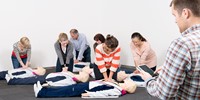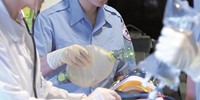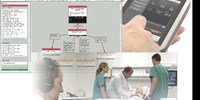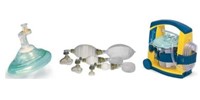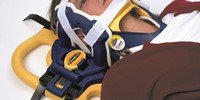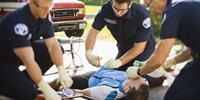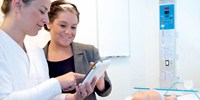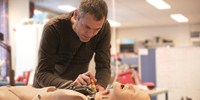Completely wireless and self-contained
Internal electrical and pneumatic power
Supplemental wired connectivity and power
Wirelessly integrates with existing computer networks
Articulation / Range of Motion
- Full articulation for realistic patient handling procedures
- Head can be flexed into chin to chest position and remain flexed until repositioned
- Legs dock to pelvis so that mechanical, electrical and pneumatic connections are made simultaneously with attachment
- Sits unassisted and bends at waist to tripod position
Palpable Anatomy
Palpable anatomy for assessment and site location, including clavicle, sternum, spine, ribs (front and sides), xiphoid process, scapula, anterior superior iliac crest, pubic symphysis, and greater trochanter
Patient Care & Assessment
- Wig for hair care procedures
- Blinking eyes with adjustable blink rate and ability to open, close or partially closed
- Interchangeable pupils (normal, dilated, constricted)
- Ear canal for practice of irrigation and cleaning
- Nasal packing
- Removable upper denture for oral and denture care
- Toes spread for bandaging
Airway
NG Tube
- Insertion of NG Tube
- Accurate anatomical landmarks for tube measurement (nose to earlobe to xiphoid process)
- Lavage and gavage
- Internal stomach reservoir with 500mL fluid capacity, external quick fill port, and optional external bag for large volume infusions
Tracheostomy
- Concealed port in neck for insertion of tracheostomy tube
- Trach care and
- Reservoir for practice of tracheal suctioning with fluid
- Ventilations with chest rise
Chest compression
- Chest compressions with maximum compression depth of 70mm
Injections
IV
-
Bilateral pre-ported IV arms with capability for fluid administration when attached to a fluid bag
- Optional female multi-venous IV training arm with capability of IV placement, fluid administration, and venipuncture
Intramuscular
- Bilateral deltoid, ventral gluteal, dorsal gluteal and thigh injection sites
- Papable anatomy to aid in site selection includes anterior superior iliac crest, pubic symphysis, and greater trochanter
Subcutaneous Abdominal Injection
- Abdominal module with an injectable region centered around the umbilicus with a 5” radius
Central Line
- Invisible port below the clavicle for pre-placement of central line catheter for site care, dressing change, flushing lines, and continuous or intermittent infusion
- Internal central line reservoir with 500mL fluid capacity, with option to use an external reservoir bag for large volume infusions
Gastrostomy
- Invisible port in upper left abdomen for pre-placement of a PEG or G tube for feeding
- Internal reservoir with 500mL fluid capacity, with option to use an external reservoir bag for large volume infusions
Ostomy
- Colostomy stoma with through hole connects to fluid reservoir for irrigation procedure
- Three interchangeable stomas include normal, dusky (non-perfusing), and infected
- Area around stoma will accept an ostomy pouch consisting of a skin barrier and connecting pouch
Genitalia
- Female genitalia with lifelike feel and realistic anatomy, includes labia majora, labia minora, urethral opening, clitoris, and vagina
- Labia minora in naturally closed position, when opened exposes urethral opening
Perineal Care
- Patient simulator shall allow manipulation into dorsal recumbent position for perineal care
- Genitalia shall accept perineal care with a washcloth and warm water, including separation of the labia for cleansing
Urinary Catheterization
- Manipulation into supine position with knees flexed is possible
- Genitalia accepts straight or indwelling catheters
- Genitalia attaches to an internal system including an internal urinary reservoir for urinary catheterization with ability to pressurize reservoir for proper fluid return
- Urinary reservoir has external quick access port for ease in filling
- Genitalia can be cleaned with betadine or chlorhexidine products and is compatible with glycerin/water-based lubricants typically found in a Foley kit
Vaginal Suppositories / Medications
- Vaginal canal allows for insertion of vaginal suppositories or medications
Enema
- Manipulation into Sims’ position for enema administration possible
- Genitalia attaches to external reservoir bag for enema administration
Rectal Suppositories
- Anal opening will accept real and simulated rectal suppositories
A SimPad PLUS, SimPad Classic or LLEAP System is required for operation of the Nursing Anne Simulator. The SimPad PLUS and LLEAP systems are sold separately. See the SimPad PLUS System or LLEAP pages for more information.
Breathing
- Spontaneous breathing synchronized with selected breath rate (0-60 bpm)
- Bilateral or unilateral chest rise
- Right main stem intubation with right side unilateral chest rise
Pulses
- Palpable pulses synchronized with ECG and adjustable in strength (weak, normal and strong)
- Bilateral carotid pulses ( the same pulse left and right)
- Brachial and radial pulses in the right and left arm, with right and left independent control
- Brachial pulse disabled and turned off if the pressure in the cuff is larger than 20 mmHg
- Radial pulse turned off when the pressure in the BP cuff is larger or equal to the set systolic BP
- Bilateral femoral pulses ( the same pulse left and right)
- Bilateral pedal pulses with right and left independent control
ECG
- ECG monitoring capabilities when used with SimPad PLUS, SimPad Classic or LLEAP, and ShockLink™
Defibrillation / Pacing
- Defibrillation, cardioversion, and pacing when used with ShockLink (training pads – apex and sternum)
Sounds
- Audible vocal sounds, as well as heart, lung and bowel sounds may be auscultated with real stethoscope when used with SimPad PLUS, SimPad Classic, or LLEAP
Vocal Sounds
Pre-recorded single vocal sounds can be either played at a controllable volume, as a single occurrence or continuously repeated, including:
- Cough
- Moan
- Vomit
- SOB Breathing (continuous sound)
- Scream
- “Yes”
- “No”
- Ability to download vocal sounds to the remote and play them during simulation
- Optional wireless headset/ microphone allows user to talk through simulator
- Vocal sounds can be assigned to certain state themes
Lung Sounds
Anterior and posterior lung sounds synchronized with the set breathing rate (0-60 bpm) and chest rise on the manikin
- Normal
- Coarse crackles
- Fine crackles
- Pleural rub
- Pneumonia
- Rhonchi
- Stridor
- Wheezes
- No Sound
Lung sound and sound volume may be set individually for each lung – left and right, upper and lower
Eight anterior and six posterior lung sound auscultation sites
Heart Sounds
Heart sounds synchronized with the ECG (QRS)
- Normal
- Aortic stenosis
- Austin Flint Murmur
- Friction Rub
- Mitral Valve Prolapse
- Systolic Murmur
- Diastolic Murmur
- OS@70ms / Open Snap MS
Non-perfusing rhythms will not generate heart sounds
Bowel Sounds
Four independently controlled auscultation areas for bowel sounds, centered around the umbilicus
Volume control in each quadrant
Bowel sounds are continuous repetitive sounds repeated infinitely
- Normal
- Hyperactive
- Borborygmus
- Hypoactive
- No Sound
Auscultation of fetal heart tones, instead of bowel sounds, are available for auscultation from the abdomen
- Fetal Normal 140bpm
- Fetal Tachycardia 200bpm
- Fetal Bradycardia 100bpm
Non-Invasive Blood Pressure
- Bilateral measurement of non-invasive blood pressure (auscultated or palpated) when used with SimPad PLUS, SimPad Classic or LLEAP
- Korotkoff sounds synchronized with programmable ECG with and have sound volume control in 10 steps (0-9) available in both arms
- Auscultatory gap on/ off feature
- Pressure range of 0-300mmHg
Optional Accessories
- ShockLink™
- Zoll Defibrillator Connector (ShockLink)
- Physio Control® Quick Combo™ Connector (ShockLink)
- Multi-Venous IV Training Arm
- Tablet PC Instructor – Patient Monitor
- Rugged Table Instructor PC – Patient Monitor
- Laptop LLEAP Instructor PC – Patient Monitor
- All-in-One Panel PC Instructor-Patient Monitor
- Wireless Headset
Simulated Patient Monitor
An optional, configurable, touchscreen Patient Monitor is available
When used with the handheld remote, parameters include:
- HR
- BP
- ECG
- SpO2
- Respiratory Rate
- Temperature
When used with the PC to operate the simulator, parameters include:
- ECG (2 traces)
- SpO2
- CO2
- ABP
- CVP
- PAP
- PCWP
- NICP
- TOF
- Cardiac Output
- Temperature (core and peripheral)
- AGT (labeled)
- awRR
- N2O
- ICP
- O2
- pH
- Patient Information Display
- X-Ray Display
- Blood Gases Display
- 12 Lead ECG Display
The PC operated version will permit:
- Multi-media images to be inserted into simulations via the touchscreen patient monitor
- Pre-recorded multi-media videos to be inserted into simulations via the touch screen patient monitor
- Lab values to be inserted into simulations via the touchscreen patient monitor
- X-Rays to be inserted into simulations via the touchscreen patient monitor
Scenarios and Debriefing
Operating system is capable of operating via Automatic Mode (pre-programmed scenarios) and Manual Mode (“on-the-fly” to modify the parameters of the scenario in real time)
Operating system can integrate with debriefing software, which combines synchronized student log, patient monitor display, live audio and video feed in a single debriefing file
System may be used with a web camera
Operating system can connect to an online store that sells pre-programmed scenarios and scenario aids that can be imported to the instructor remote or PC
Compatibility
Nursing Anne Simulator is compatible with the following systems/software:
- LLEAP – Laerdal Learning Application
- SimPad® PLUS System
- SimPad® Classic System (backward compatible)
- SimManager™
- SimView™ / SimView™ Mobile
- Session Viewer
- ShockLink™
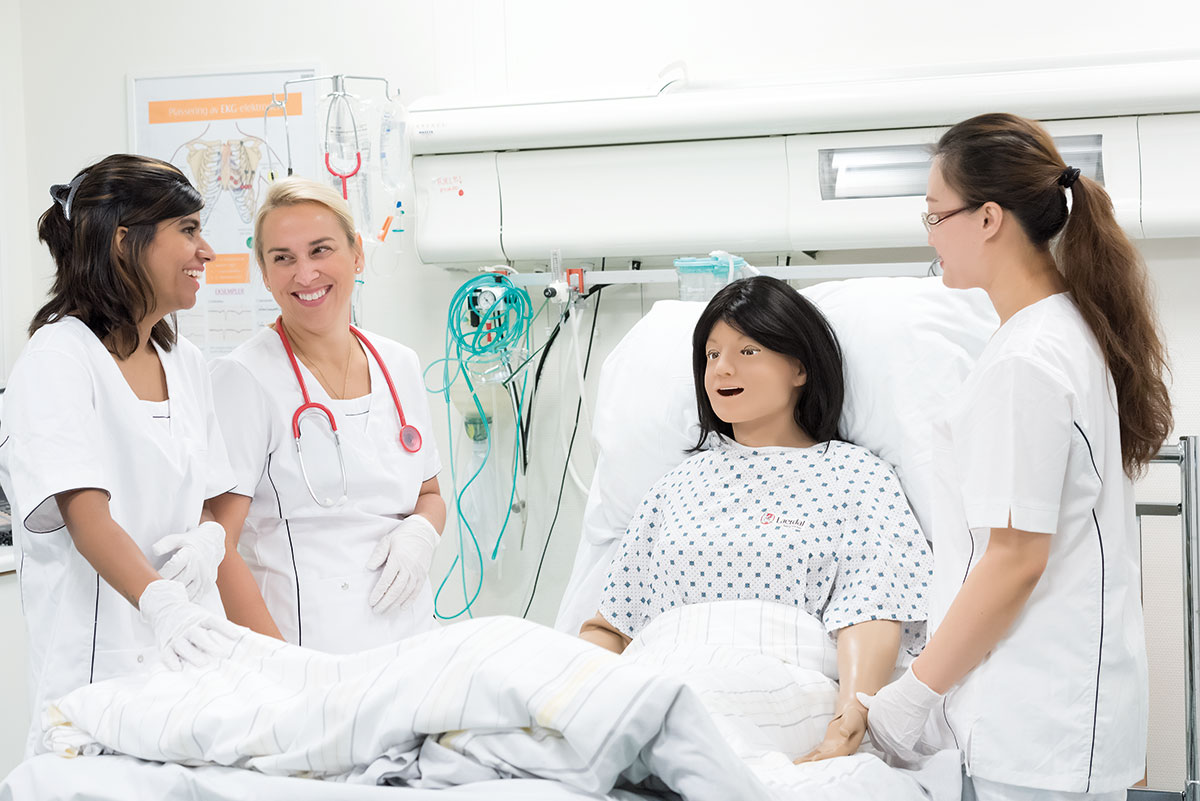
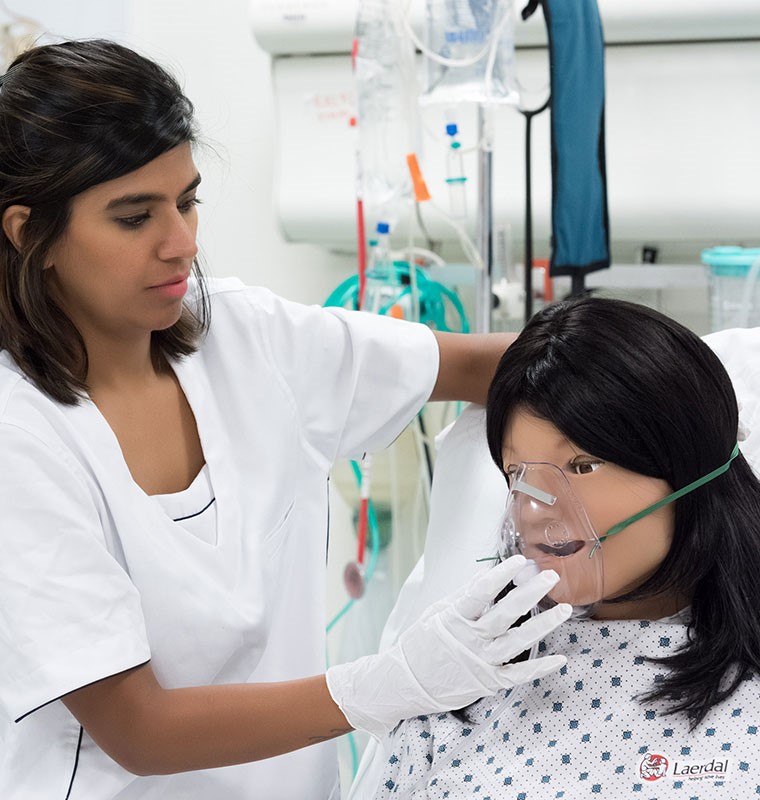
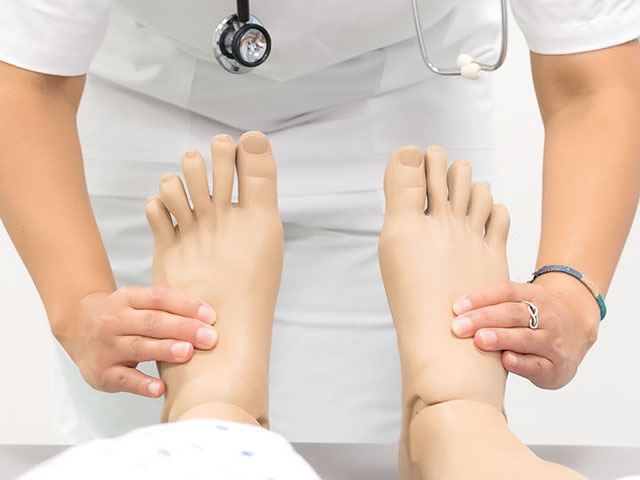
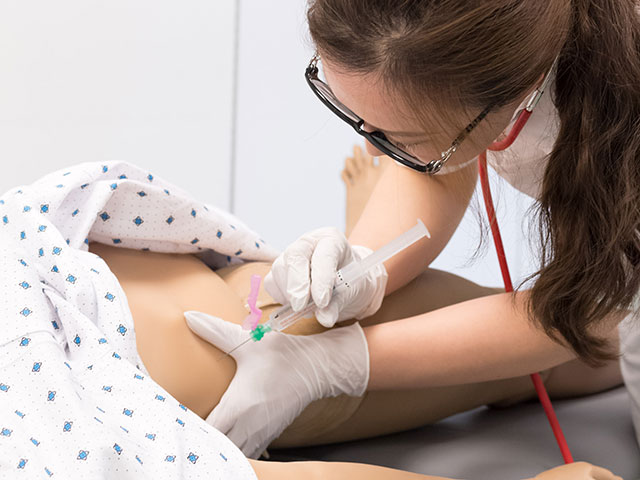
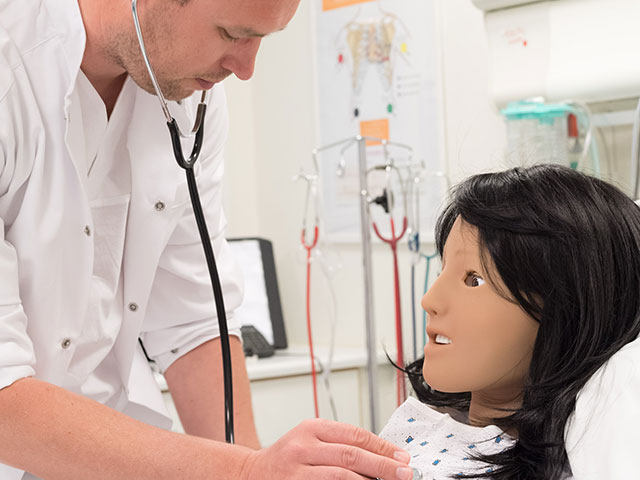
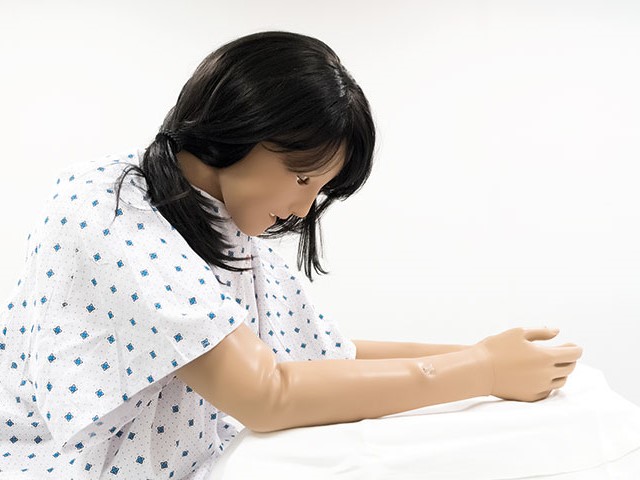
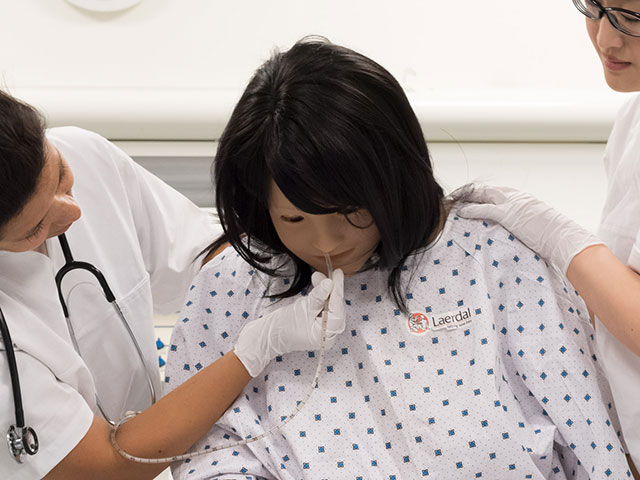
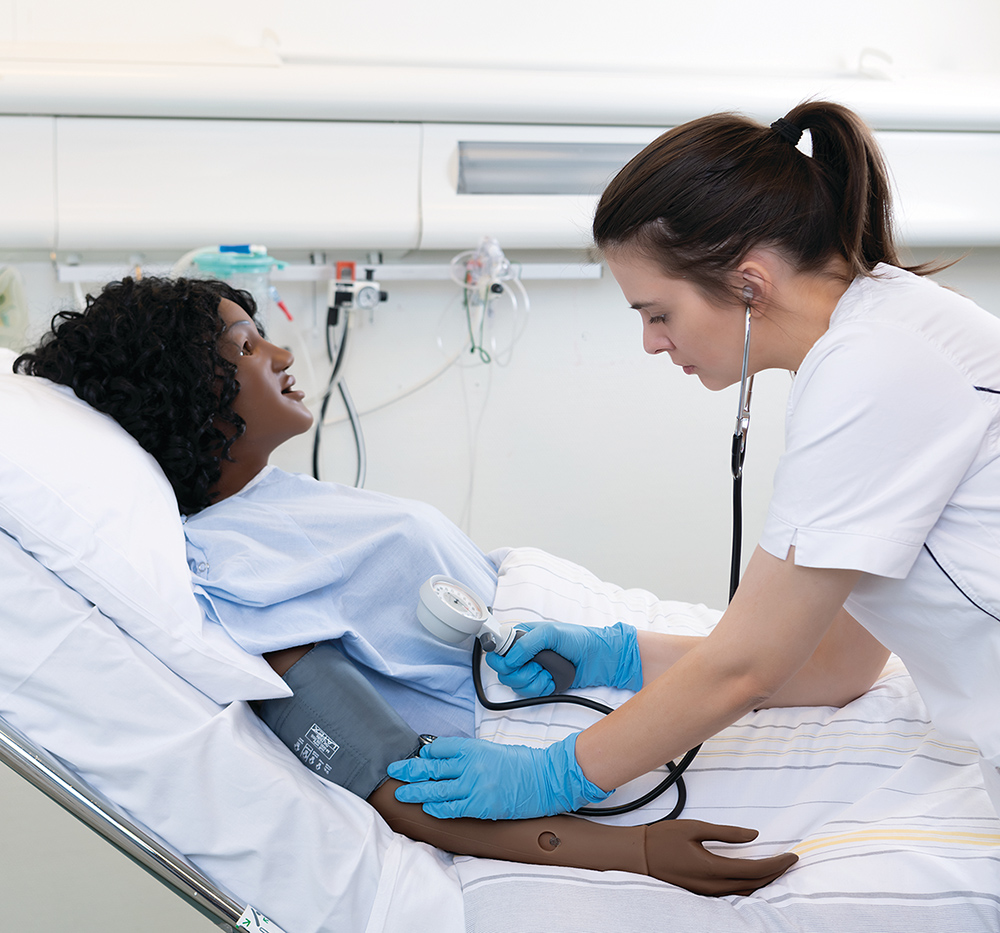
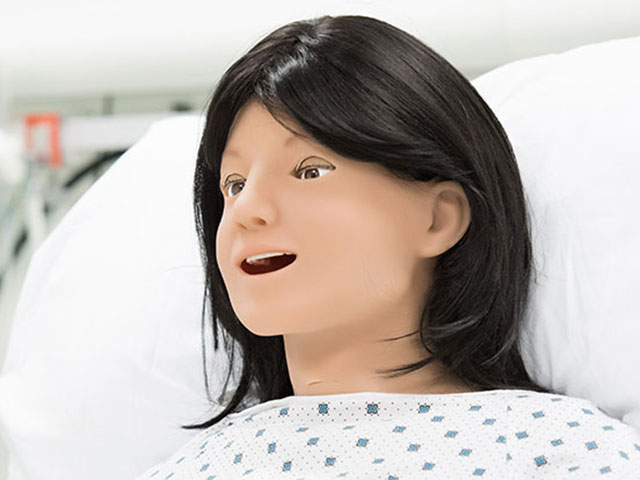
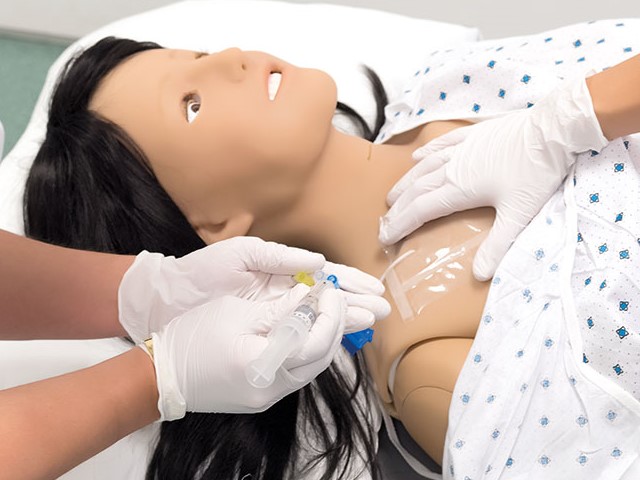

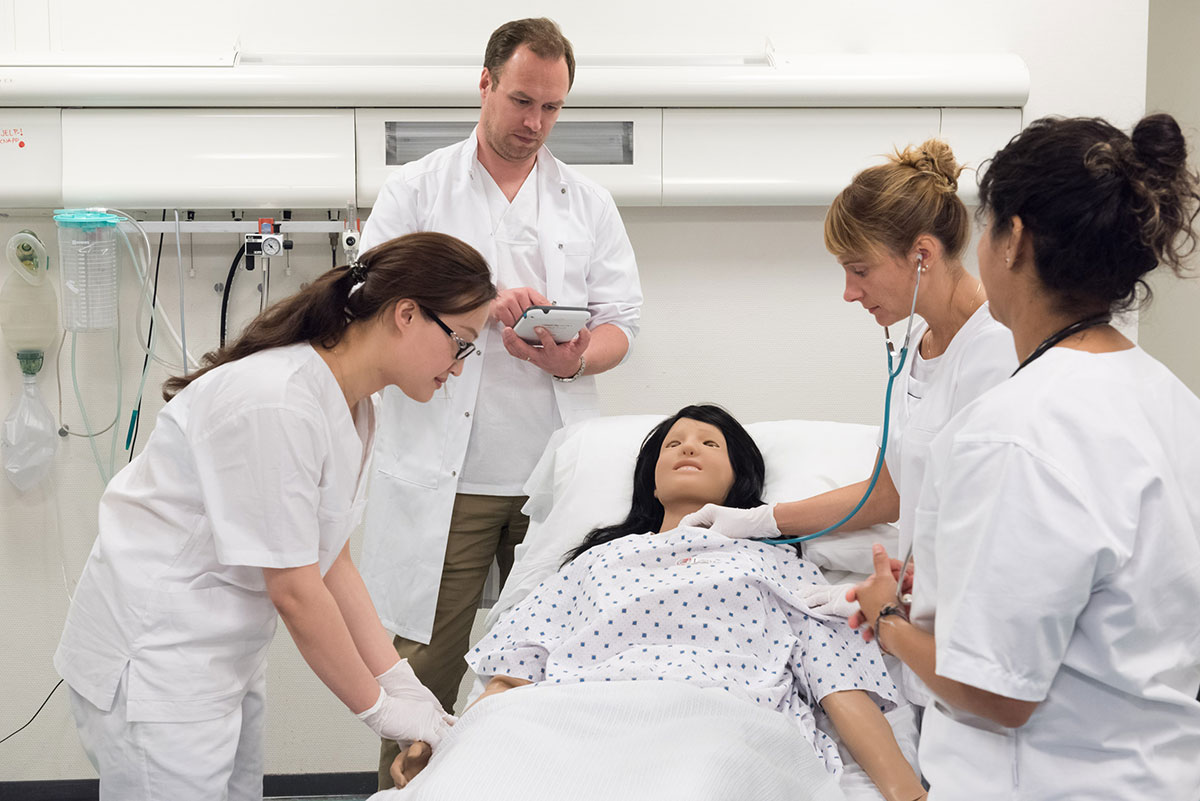
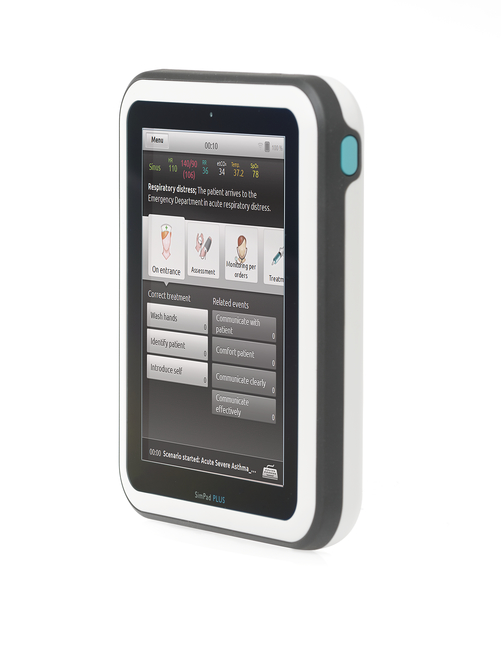
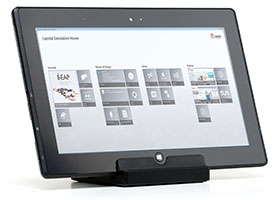
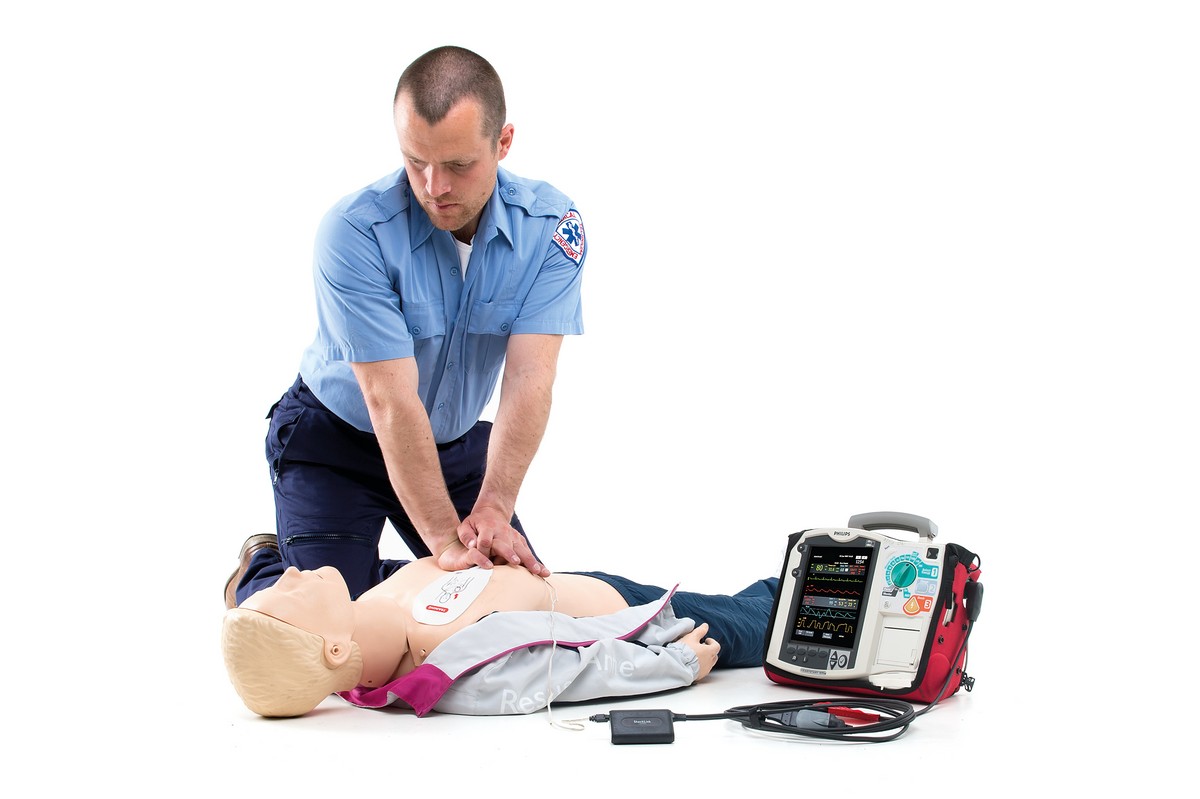

 Poland
Poland
